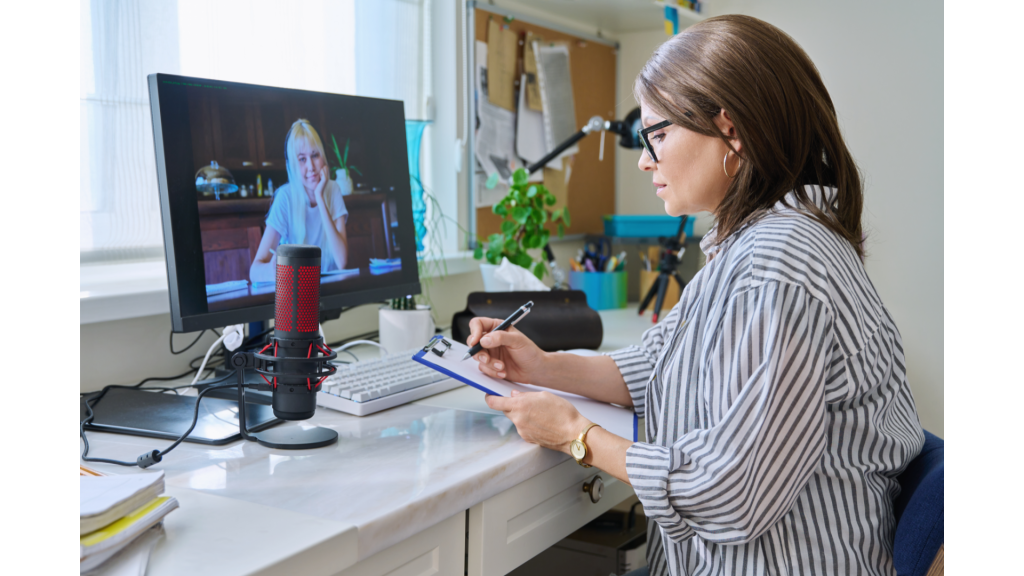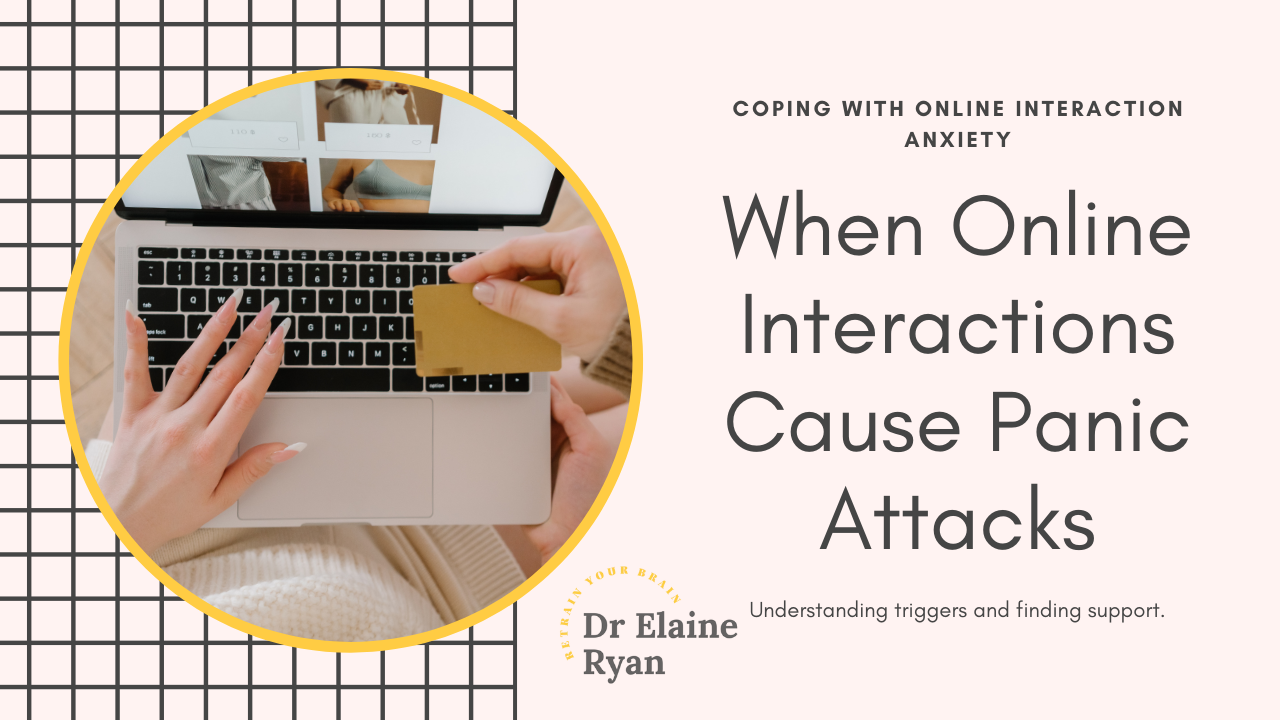When panic attacks can be triggered by online interactions or FOMO
As many of you know already, as I write about it regularly, I had panic disorder, and if there is one thing that I am grateful for, it is that, for me, it didn’t coincide with the use of social media and online interactions that exist today.
For some people, and maybe you are one, the constant connectivity and online interactions can often trigger panic attacks.
The fear of missing out, or FOMO, further exacerbates these symptoms. As Cleveland Clinic points out, increasing thoughts such as ‘Why didn’t they invite me?’ can add to your already anxious mind.
Recognizing these digital triggers is the first step towards effective management. But how do you navigate this complex landscape?
I want to help answer that today, outlining strategies for coping with panic disorder in the digital age before exploring the role of online interactions and FOMO in triggering panic attacks.
Whether you’re someone who has panic disorder, or know a loved one who suffers, or a mental health professional, I hope to offer insights into managing panic disorder in our increasingly digital world.
Panic Attacks Self-help

Dr Ryan’s online self-help course for Panic Attacks
Understanding Panic Disorder in the Context of the Digital World
If you are not familiar with panic, I suggest you read my article on panic disorder, but briefly, panic disorder is characterized by recurrent, unexpected panic attacks which are so frightening that they can induce palpitations, sweating, shaking, shortness of breath, or feelings of impending doom.
In the digital age, the prevalence of panic disorder seems to be on the rise. Indeed, this study expands on this by noting computer anxiety, replacement fear, digitalisation fear and internet fear. The constant bombardment of information, the pressure to be always available, and the comparison culture fostered by social media can all contribute to this increase.
The digital world, which we now all live in whether we like it or not, with its endless stream of stimuli, can be particularly challenging for those with panic disorder.
The Digital Age and Its Impact on Mental Health
The digital age has brought about significant changes in our lives. While it has many benefits, it also has potential drawbacks, particularly for mental health.
The ‘always on’ culture can be overwhelming. The fact that we have the phrase ‘digital detox’ tells us that we have encountered problems if we need a detox, and many people are unable to be parted from their phones without feeling anxious. In my clinical practice, helping people with anxiety disorders, leaving the phone down was one of the biggest challenges that surprised me with clients; many just couldn’t go without it, without increasing anxiety, which was relieved when they got their phone back.
Online Interactions as Triggers for Panic Attacks
Online interactions can be a significant trigger for panic attacks. Negative interactions, such as cyberbullying or online harassment, can lead to increased anxiety and panic.
Even seemingly benign interactions can be stressful. For instance, the pressure to respond immediately to messages or emails can trigger feelings of panic.
Understanding these triggers is crucial. It allows individuals to develop strategies to manage their exposure to potential digital stressors.
The Phenomenon of FOMO and Its Role in Panic Disorder
FOMO, or the fear of missing out, is becoming increasingly prevalent with the rise of social media. It’s the anxiety that an exciting or interesting event may currently be happening elsewhere. I’m in my fifties now, and although I didn’t have a word for in in my twenties while studying at Queen’s, I would have definitely experienced FOMO.
FOMO can exacerbate the symptoms of panic disorder. The constant comparison with others’ lives, the pressure to be always connected, and the fear of missing out can all contribute to feelings of anxiety and panic.
Recognizing the role of FOMO in panic disorder is important. It’s a step towards managing its impact and developing effective coping strategies.
Proactive Strategies for Coping with Panic Disorder
Coping with panic disorder in the digital age requires proactive strategies. It’s about recognizing triggers, managing exposure to digital stressors, and developing effective coping techniques.
One key strategy is to establish boundaries with technology. This could mean setting specific times for checking emails or social media, or taking regular digital detoxes.
Another important strategy is to create a calming online environment. This could involve curating your social media feeds to include only positive and uplifting content, or using apps that promote relaxation and mindfulness.

Recognizing and Managing Digital Triggers
Recognizing digital triggers is a crucial step in managing panic disorder. These triggers could be anything from a stressful email to a negative comment on social media.
Once these triggers are identified, they can be managed. This could involve limiting exposure to certain types of content, or developing coping strategies for when exposure is unavoidable.
If you are doing CBT, this triggers will come out during your therapy.
Grounding Techniques During a Panic Attack
Grounding techniques can be incredibly effective during a panic attack. These techniques help to bring the focus back to the present moment, reducing feelings of fear and panic.
One common grounding technique is the 5-4-3-2-1 method. This involves identifying five things you can see, four things you can touch, three things you can hear, two things you can smell, and one thing you can taste.
Another effective technique is deep breathing. By focusing on the breath, you can help to calm the mind and reduce the intensity of the panic attack.
Mindfulness and Meditation: Tools for Emotional Regulation
Mindfulness and meditation are powerful tools for emotional regulation. They can help to reduce anxiety, manage stress, and improve overall mental health.
Mindfulness involves paying attention to the present moment without judgment. This can help to break the cycle of negative thoughts that often accompany panic disorder.
Meditation, on the other hand, involves focusing the mind on a particular object, thought, or activity. Regular meditation can help to reduce the frequency and intensity of panic attacks, making it a valuable tool in the management of panic disorder.
Leveraging Technology for Panic Disorder Management
While the digital world can sometimes exacerbate panic disorder, it can also be a powerful tool for managing it. Technology offers a range of resources that can help individuals cope with panic attacks and reduce anxiety.
From mindfulness apps to online therapy platforms, digital tools can provide valuable support. They can offer immediate assistance during a panic attack, help track symptoms, and provide strategies for managing anxiety.
However, it’s important to use these tools as part of a comprehensive treatment plan. They should complement, not replace, traditional therapies such as cognitive-behavioral therapy or medication.
Digital Tools and Apps for Anxiety Management
There are numerous digital tools and apps designed to help manage anxiety and panic disorder. These tools can provide immediate assistance during a panic attack, help track symptoms, and provide strategies for managing anxiety.
For example, mindfulness apps can guide users through calming exercises during a panic attack. Symptom tracking apps can help individuals identify triggers and monitor their progress over time.
While these tools can be incredibly helpful, it’s important to remember that they are not a substitute for professional help. They should be used in conjunction with traditional therapies and under the guidance of a healthcare professional.
Conclusion
In conclusion, managing panic disorder in the digital age requires a balanced approach. While the digital world can present challenges, it also offers valuable tools and resources for coping with panic disorder.
Ultimately, it’s about leveraging technology’s benefits while setting boundaries to protect mental health. This balance is key to effectively managing panic disorder in the digital age.
